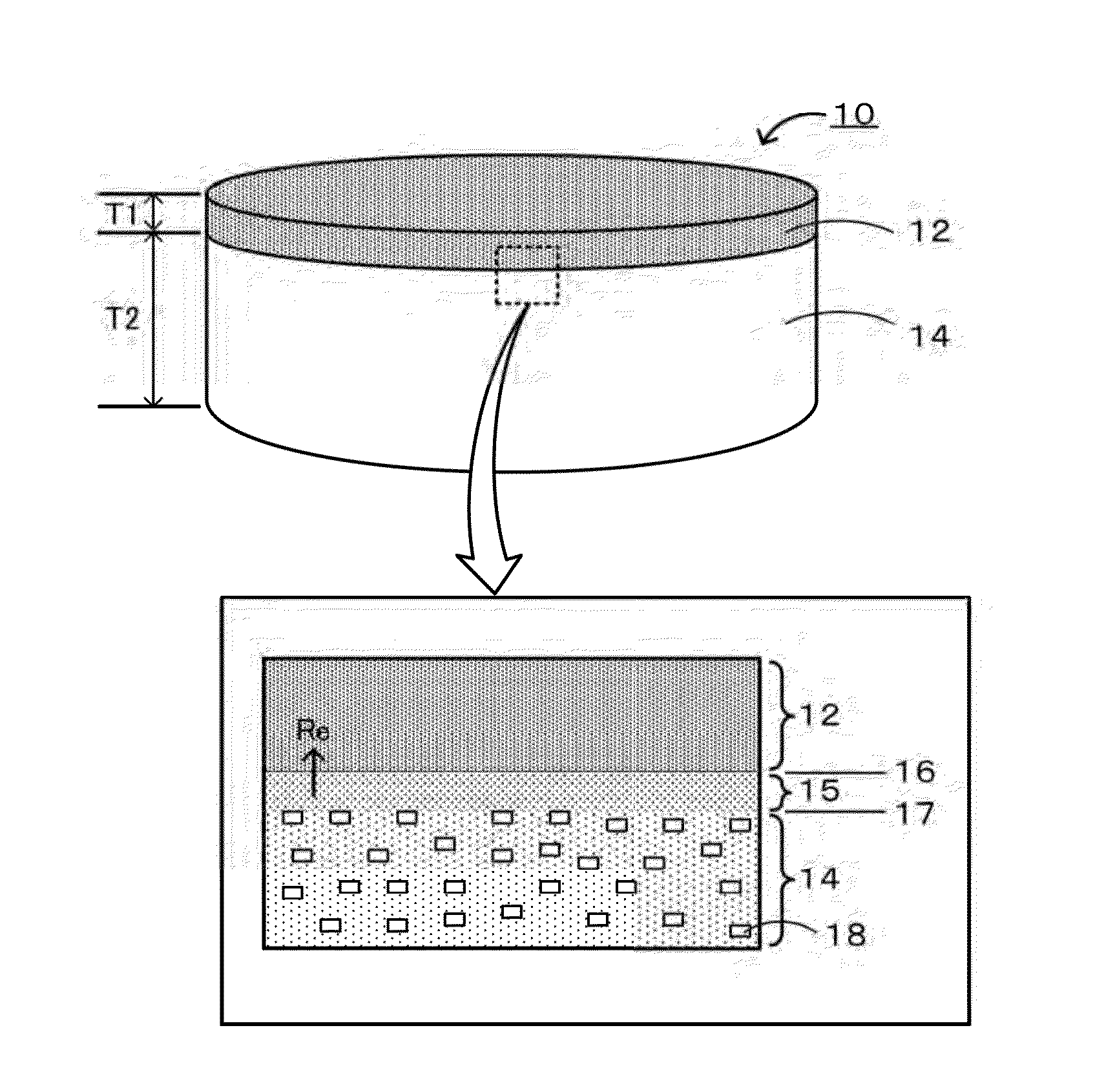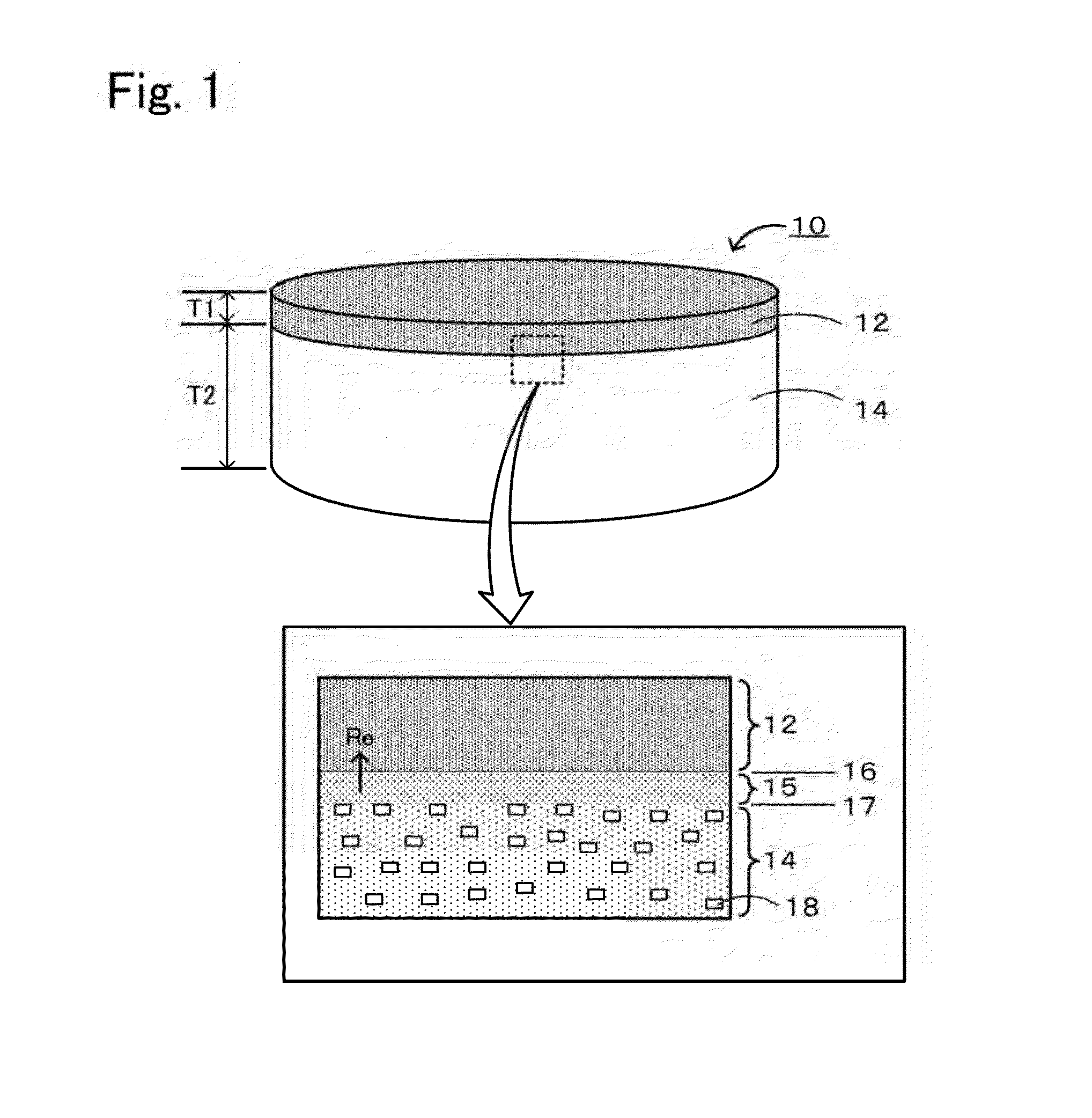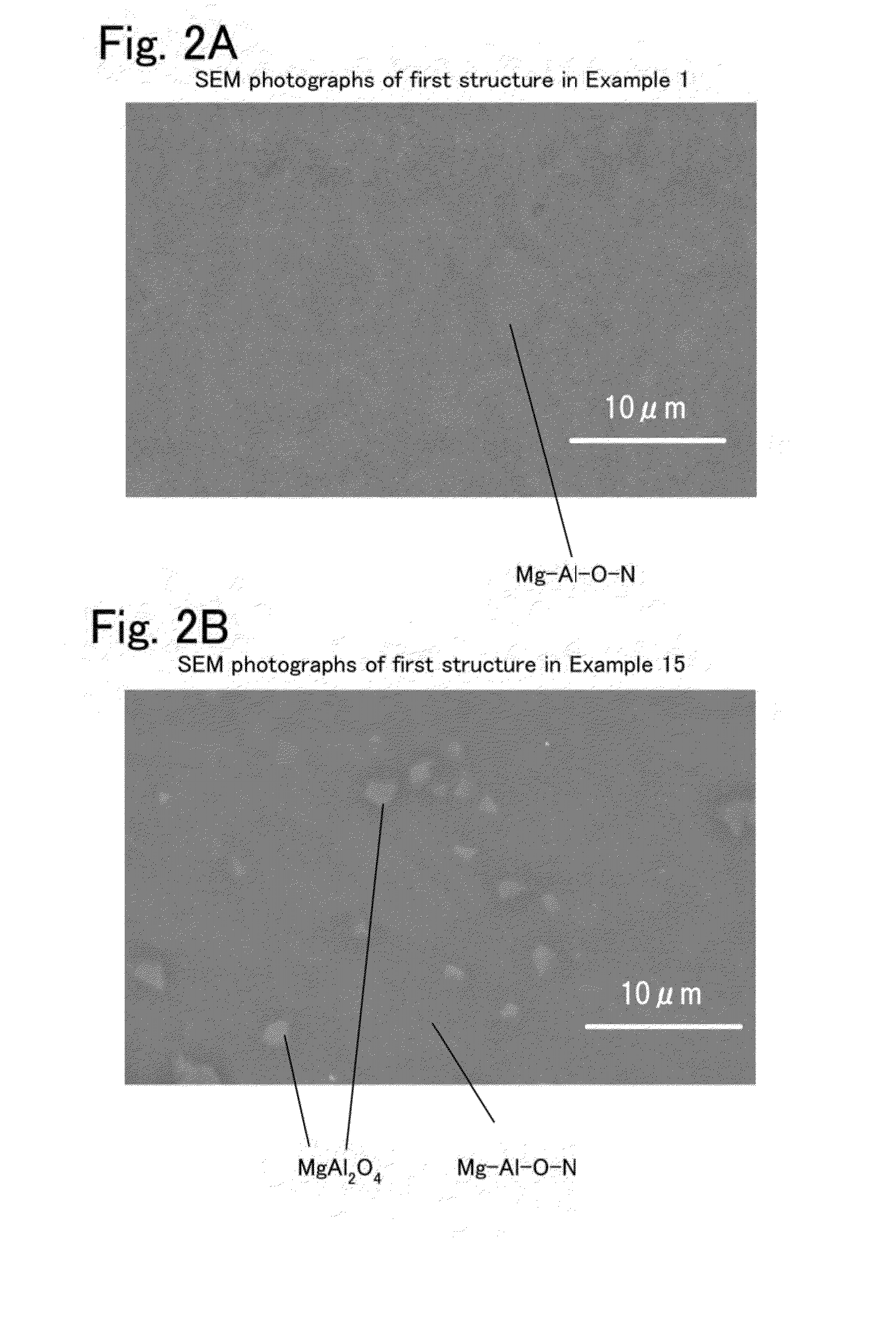Laminated structure, member for semiconductor manufacturing apparatus, and method for producing laminated structure
a technology of semiconductor manufacturing apparatus and laminated structure, which is applied in the direction of electrical equipment, magnetic recording, recording information storage, etc., can solve the problems of laminated product defects, and achieve the effects of reducing the formation of reaction layers, reducing defects, and increasing stress
- Summary
- Abstract
- Description
- Claims
- Application Information
AI Technical Summary
Benefits of technology
Problems solved by technology
Method used
Image
Examples
examples
[0052]Specific examples of the production of a laminated structure will be described in the following examples.
[0053](Forming Process of First Structure)
[0054]An AlN raw material, a MgO raw material, and an Al2O3 raw material were weighed so as to satisfy the mol % values listed in Table 1 and were wet-blended in an isopropyl alcohol solvent in a nylon pot using iron-core nylon balls having a diameter of 20 mm for four hours. The AlN raw material, the MgO raw material, and the Al2O3 raw material were commercial products each having a purity of 99.9% by mass or more and an average particle size of 1 μm or less. Since the AlN raw material inevitably contains 1% by mass oxygen, oxygen was not counted as an impurity element to determine the purity. After blending, the resulting slurry was removed and was dried in a nitrogen stream at 110° C. The dried product was passed through a 30-mesh sieve to prepare a mixed powder of the first structure. The mixed powder was subjected to uniaxial p...
examples 1 to 3
[0058]The first structure was formed by mixing 80.3 mol % AlN raw material, 10.9 mol % MgO raw material, and 8.8 mol % Al2O3 raw material and sintering at a temperature of 1950° C. The second structure was formed by mixing 93.5 mol % AlN raw material, 2.7 mol % Y2O3 raw material, and 3.8 mol % Al2O raw material and sintering at a temperature of 1700° C. The resulting laminated structure was referred to as Example 1. Laminated structures according to Examples 2 and 3 were formed in the same manner as in Example 1 except that the sintering temperatures of the laminated products were 1750° C. and 1800° C., respectively.
examples 4 to 8
[0060]A laminated structure according to Example 4 was formed in the same manner as in Example 1 except that 98.8 mol %. AlN raw material, 0.7 mol % Y2O3 raw material, and 0.5 mol % Al2O3 raw material were mixed and fired at a sintering temperature of 1800° C. to form the second structure. A laminated structure according to Example 5 was formed in the same manner as in Example 4 except that 96.9 mol % Al2O3 raw material, 1.7 mol % Y2O3 raw material, and 1.4 mol % Al2O3 raw material were mixed to form the second structure. A laminated structure according to Example 6 was formed in the same manner as in Example 4 except that 97,0 mol % AlN raw material, 1.5 mol % Y2O3 raw material, and 1.5 mol % Al2O3 raw material were mixed to form the second structure. A laminated structure according to Example 7 was formed in the same manner as in Example 4 except that 95.4 mol % AlN raw material, 2.0 mol % Y2O3 raw material, and 2.6 mol % Al2O3 raw material were mixed to form the second structure....
PUM
| Property | Measurement | Unit |
|---|---|---|
| thickness | aaaaa | aaaaa |
| thickness | aaaaa | aaaaa |
| 2θ | aaaaa | aaaaa |
Abstract
Description
Claims
Application Information
 Login to View More
Login to View More - R&D
- Intellectual Property
- Life Sciences
- Materials
- Tech Scout
- Unparalleled Data Quality
- Higher Quality Content
- 60% Fewer Hallucinations
Browse by: Latest US Patents, China's latest patents, Technical Efficacy Thesaurus, Application Domain, Technology Topic, Popular Technical Reports.
© 2025 PatSnap. All rights reserved.Legal|Privacy policy|Modern Slavery Act Transparency Statement|Sitemap|About US| Contact US: help@patsnap.com



